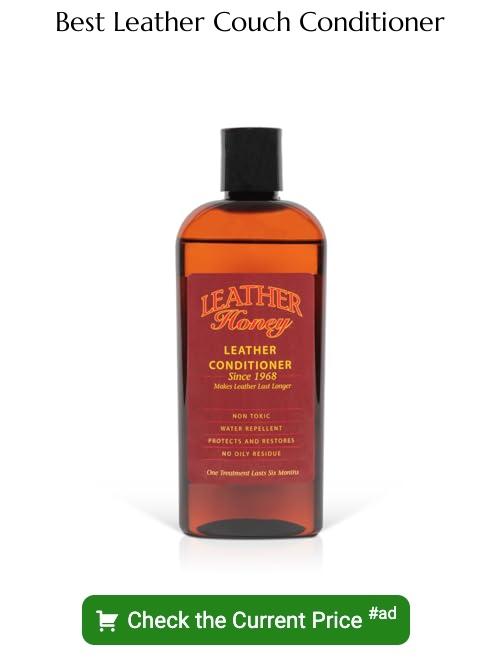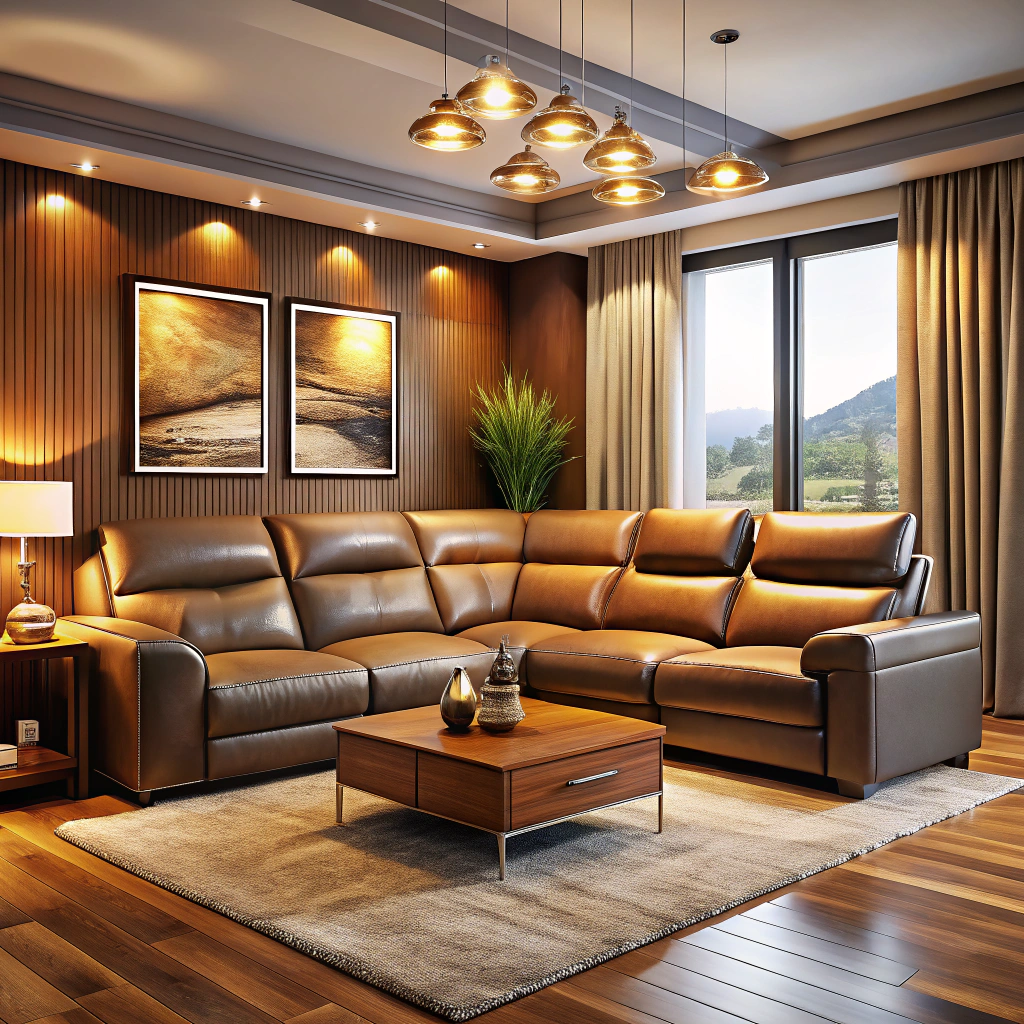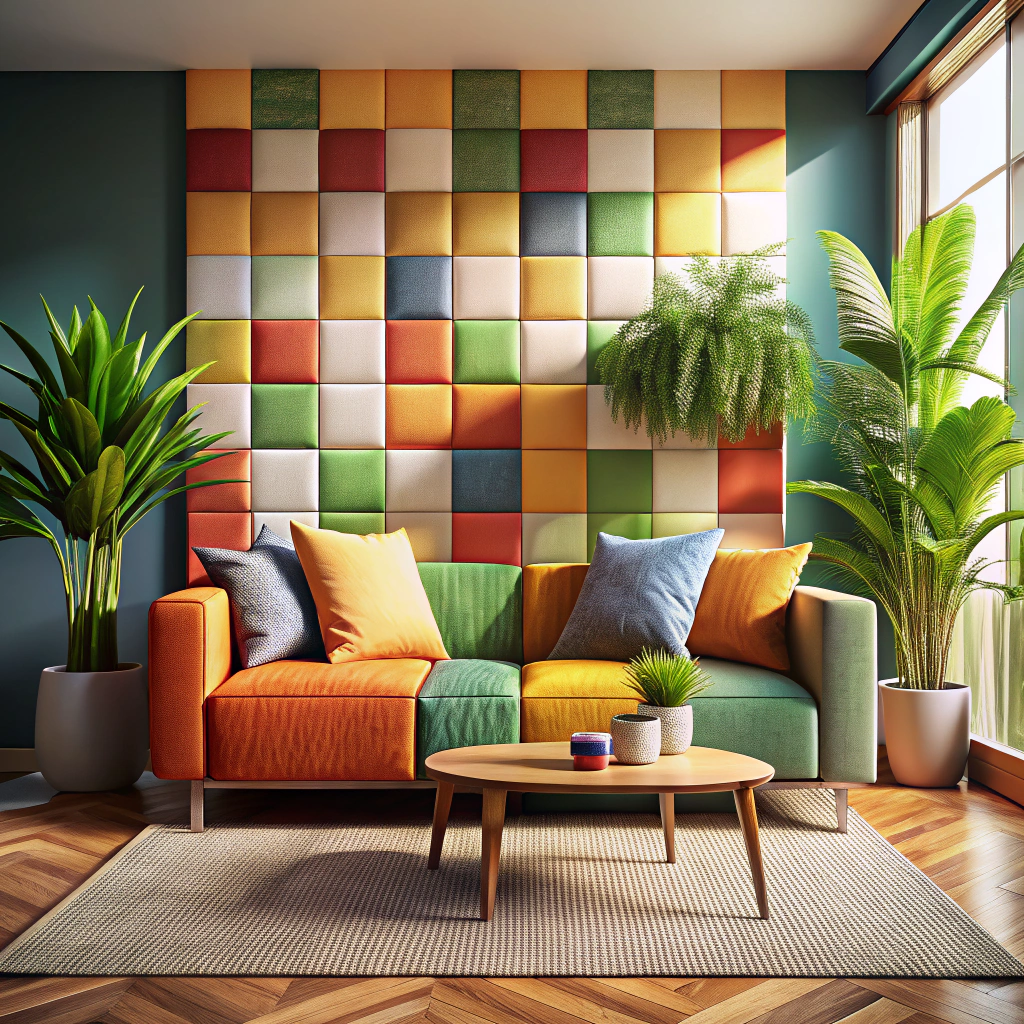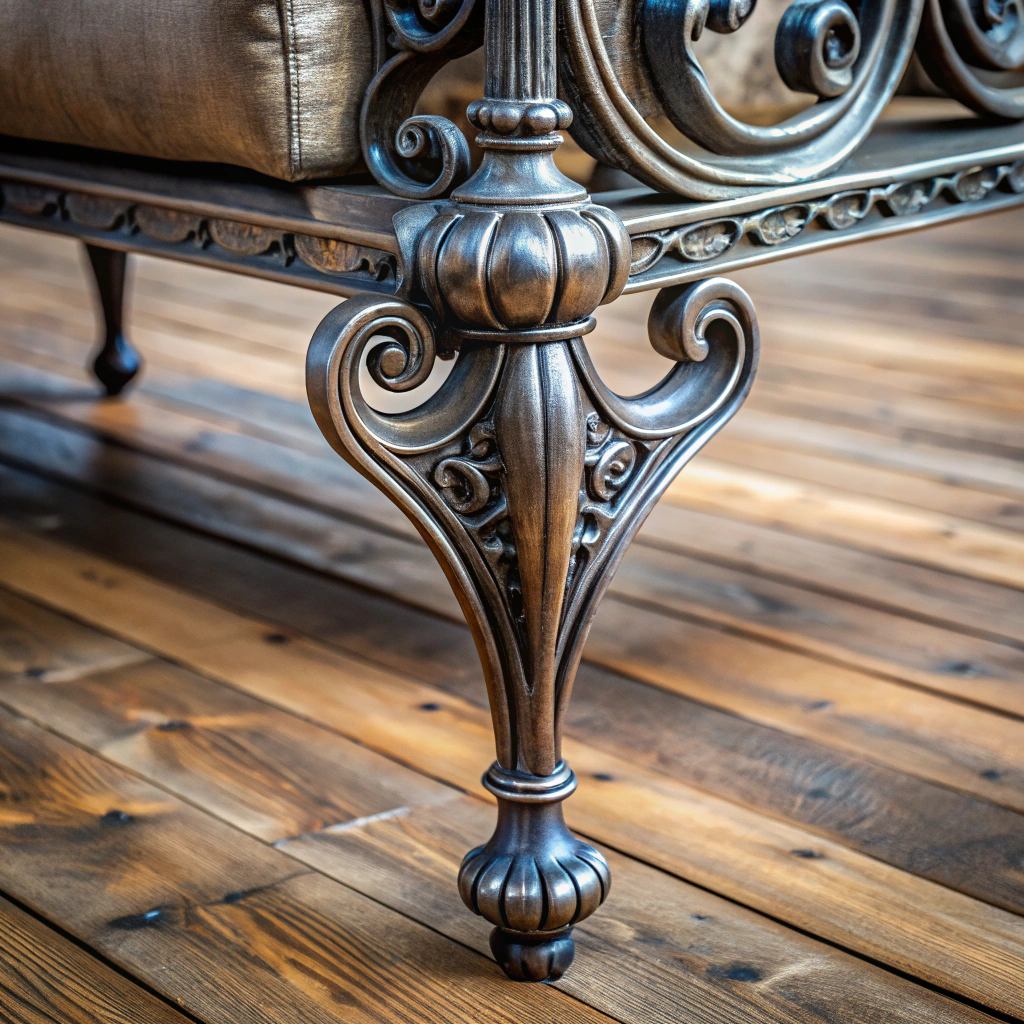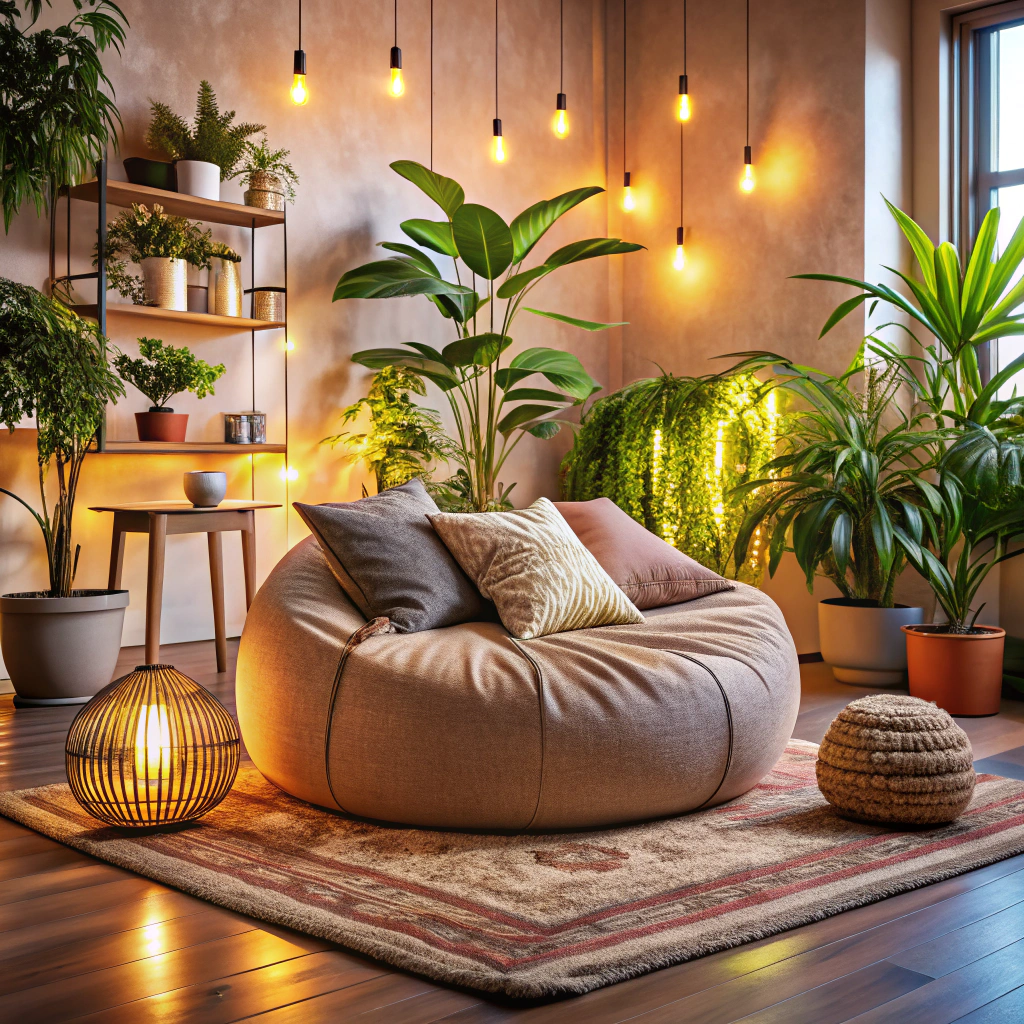Last updated on
Discover the factors that influence the longevity of leather couches and learn how to maximize their lifespan for a comfortable and stylish living space.
Leather couches are a classic and timeless addition to any home decor. They exude luxury, comfort, and durability all at once.
But as with any investment piece, it’s important to know how long you can expect your leather couch to last. Is it worth the cost? Will it withstand daily wear and tear? In this article, we’ll dive into the factors that affect the lifespan of a leather couch so you can make an informed decision before making that big purchase.
So sit back (on your trusty leather sofa), relax, and let’s get started!
Key takeaways:
- The type and quality of leather used affect the lifespan of a leather couch.
- Full-grain and top-grain leathers are considered high-quality and more durable.
- Split leather and bonded leather are less durable options.
- Faux leather is more affordable but not as long-lasting as genuine leather.
- Proper care, maintenance, and avoiding environmental factors can extend the lifespan of a leather couch.
Table of Contents
Factors Influencing Leather Couch Lifespan
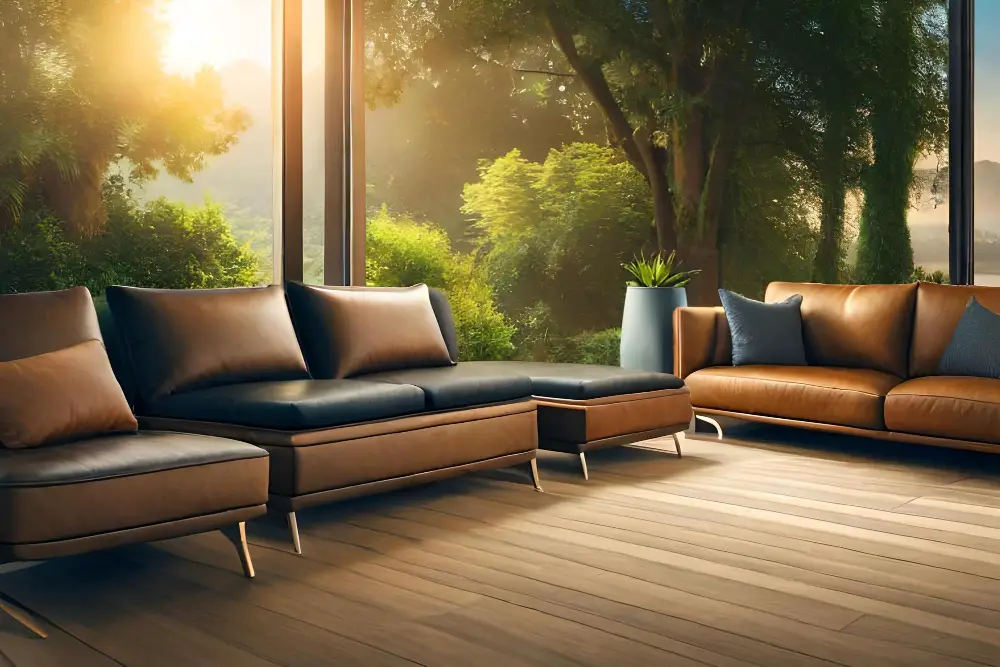
Understanding these factors can help you make an informed decision when purchasing your next piece of furniture. One crucial factor that affects the longevity of a leather sofa is the type and quality of leather used in its construction.
Full-grain, top-grain, split, bonded, faux and genuine leathers are some common types available on the market today. Full grain and top grain leathers are considered to be high-quality options as they age well over time while maintaining their natural texture and appearance.
Split leather is made from lower layers or fibrous parts left after separating full-grain or top-grain hides from their upper layer for other purposes like making bags or belts. Bonded Leather consists mainly of scraps glued together with polyurethane coating applied on it to give it a uniform look similar to real-leather but lacks durability compared to other types.
Faux Leather (also known as synthetic) mimics real-leather’s look without using animal hide; hence it’s more affordable than genuine ones which come directly from animals such as cows or sheepskin etcetera.
Types of Leather and Durability
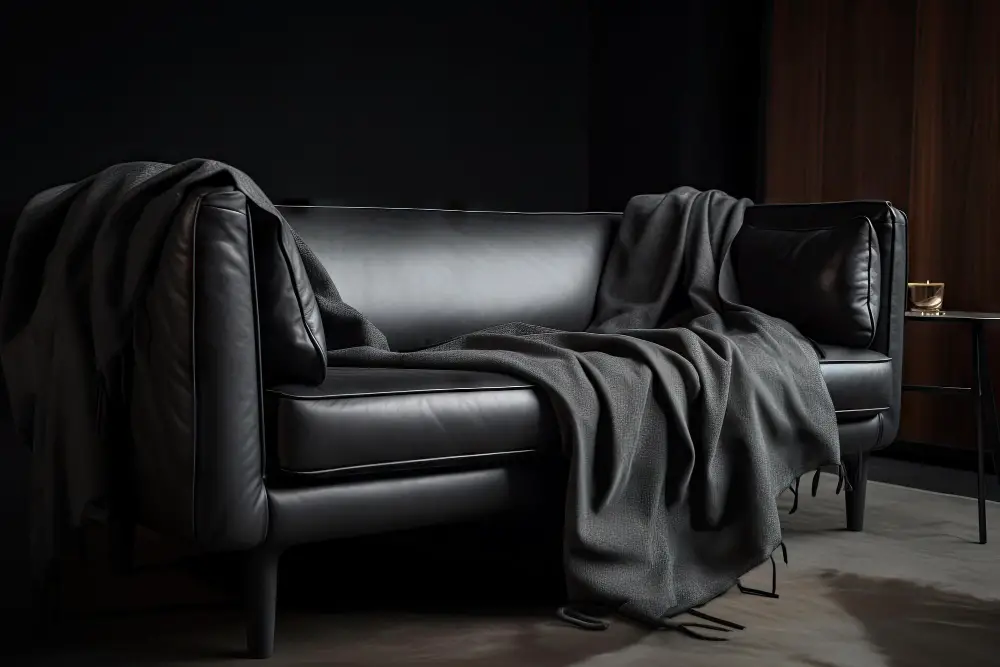
Different types of leather have varying levels of strength, flexibility, and resistance to wear and tear. Full-grain leather is considered the highest quality because it’s made from the top layer of cowhide with all its natural markings intact.
It’s also more expensive than other types but can last for decades if well-maintained.
Top-grain leather is another popular choice for furniture upholstery as it offers a balance between durability and affordability. It’s made by sanding off any imperfections on full-grain hides before applying an artificial grain pattern to create a uniform look.
Split-leather comes from the lower layers beneath top grain or full grain leathers; this makes them less durable than their counterparts but still strong enough to withstand regular use.
Bonded Leather consists mainly of synthetic materials like polyurethane which are bonded together with scraps or fibers left over after processing genuine hide into higher-quality leathers such as Top Grain Leather or Full-Grain Leather; they’re not very durable compared to other options available in stores today.
Full Grain Leather
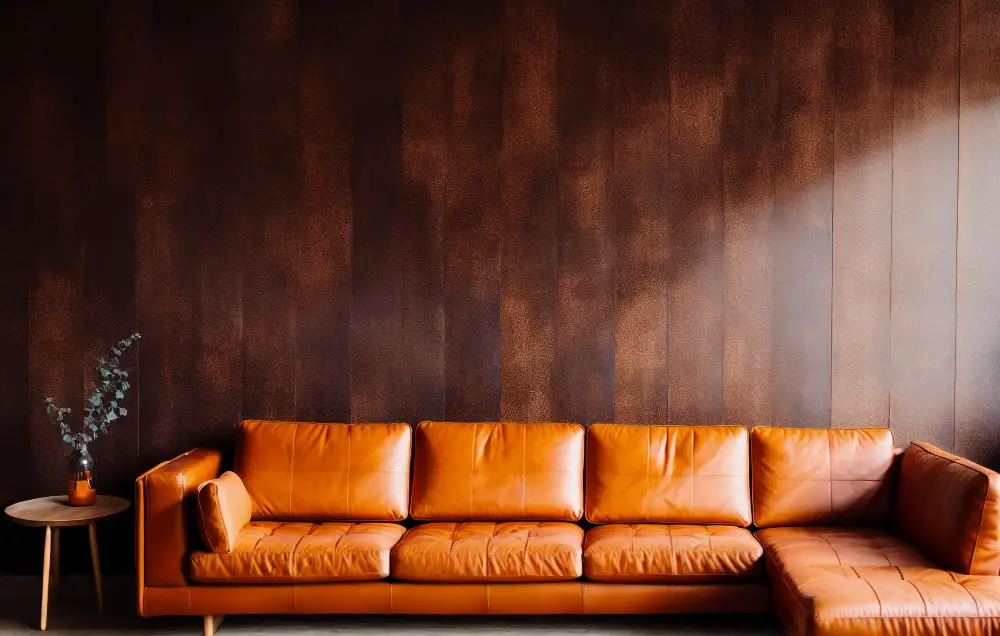
It’s made from the top layer of cowhide, which has not been sanded or buffed to remove any imperfections. This means that it retains its natural texture and markings, giving each piece a unique look.
Because Full Grain Leather hasn’t been treated with chemicals or artificial finishes, it’s more breathable than other types of leather. This makes it less likely to crack or peel over time due to moisture buildup.
If you’re looking for a long-lasting investment piece that will age beautifully over time, Full Grain Leather may be your best bet. However, keep in mind that this type of leather can come with a higher price tag compared to other options like bonded or faux leather.
When shopping for a Full Grain Leather couch, make sure you inspect the hide carefully for any blemishes as they won’t have been removed during processing. Also consider how much maintenance you’re willing to put into keeping your couch looking its best – regular conditioning will help prevent drying out and cracking but may require some extra effort on your part.
Top Grain Leather
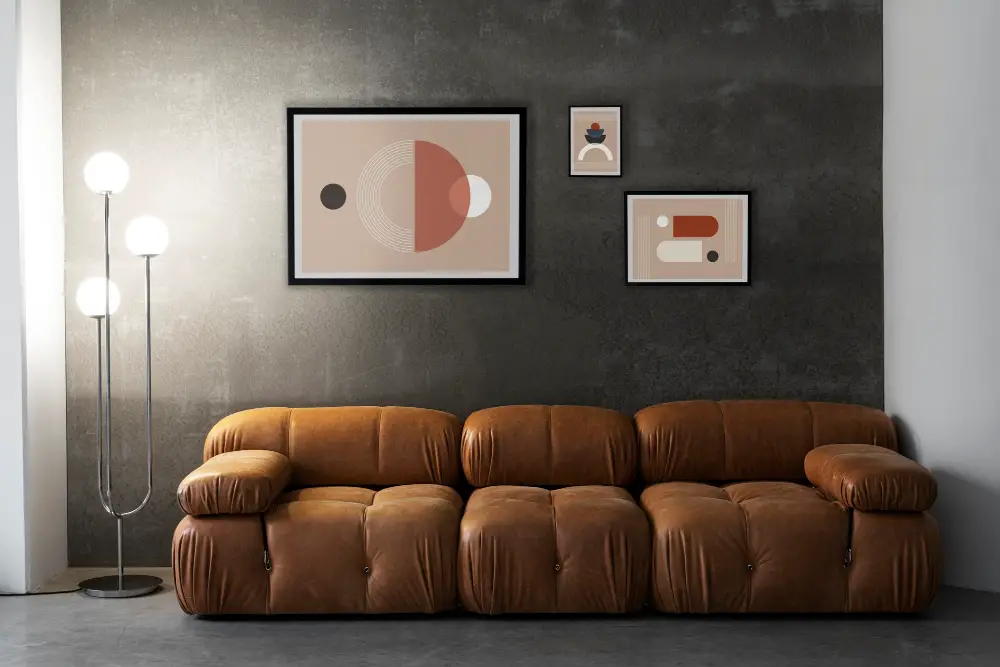
It’s considered to be one of the most durable and high-quality types of leather available on the market. Top grain leather has a natural look and feel, with visible pores, scars, and blemishes that give it character.
When it comes to longevity, top grain leather couches are known for their durability due to their thickness and strength. They can withstand daily wear-and-tear without showing signs of aging quickly.
However, not all top-grain leathers are created equal in terms of quality as some may have undergone sanding or buffing processes which remove imperfections but also reduce its overall thickness making them less durable than full-grain leathers.
Split Leather
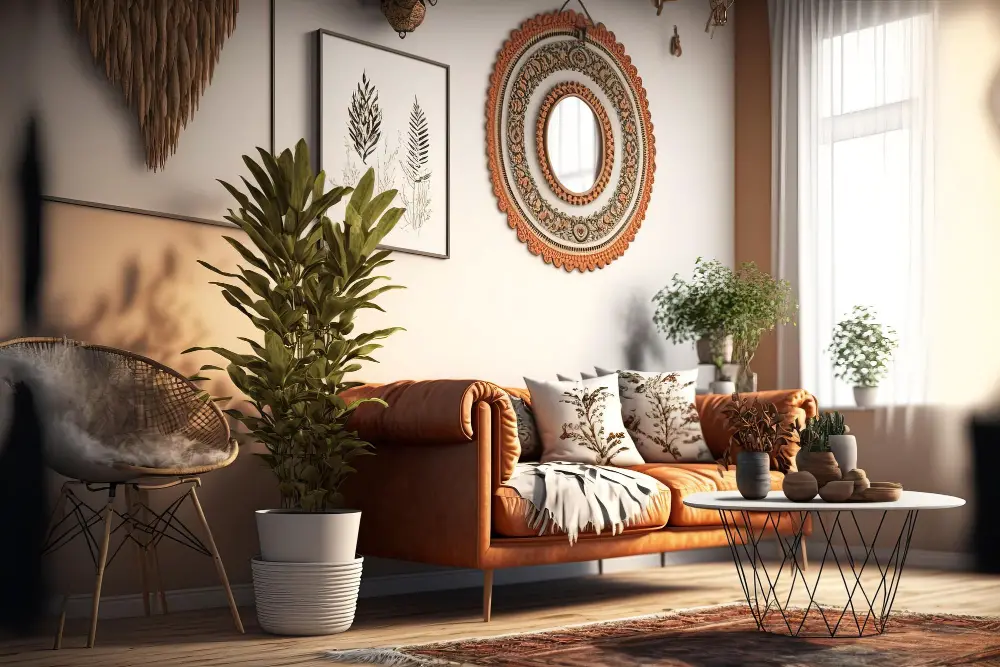
It’s also known as suede or nubuck leather and has a soft, velvety texture. While split leather may look and feel luxurious, it’s not as durable as other types of leather such as full-grain or top-grain.
If you’re considering purchasing a split-leather couch, keep in mind that it may not last as long compared to other types of leathers due to its weaker structure. However, with proper care and maintenance like regular cleaning using appropriate products for suede/nubuck materials can help prolong its lifespan.
It’s important to note that while split-leather sofas are less expensive than their full-grain counterparts they do require more upkeep over time which could add up in cost if neglected.
Bonded Leather

It’s made by bonding scraps of real leather to a fabric backing, creating an affordable alternative that still looks great. However, it’s important to note that bonded leather doesn’t have the same durability as full or top-grain leathers.
While bonded leather may be more budget-friendly than other types of leathers, it tends to crack and peel over time due to its synthetic nature. This can happen even with proper care and maintenance.
If you’re looking for a long-lasting investment piece in your home decor, it might be worth considering investing in higher-quality materials like full-grain or top-grain leathers instead.
Faux Leather

It’s made from various materials such as polyurethane (PU) and polyvinyl chloride (PVC), which are then coated with a layer of plastic to give it the appearance of real leather. Faux leather is often more affordable than genuine leather and can be easier to maintain.
However, when it comes to lifespan, faux-leather couches may not last as long as their authentic counterparts. The plastic coating on faux-leather furniture tends to crack over time due to exposure from sunlight or heat sources like radiators.
The material doesn’t age well compared with natural leathers that develop character over time.
Genuine Leather

It’s made from the top layer of animal hide and is considered to be one of the most durable types of leather available. Genuine leather has a natural look and feel that can’t be replicated by synthetic materials.
However, not all genuine leathers are created equal in terms of durability. The quality depends on factors such as the type of animal hide used, tanning process, and finishing techniques applied to it.
When shopping for a genuine leather couch, it’s important to pay attention to its grade or quality level. Higher grades indicate better quality hides with fewer imperfections like scars or blemishes.
It’s also worth noting that genuine leather requires proper care and maintenance if you want it to last longer. Regular cleaning with mild soap and water followed by conditioning will help keep your sofa looking great over time.
Leather Quality and Aging
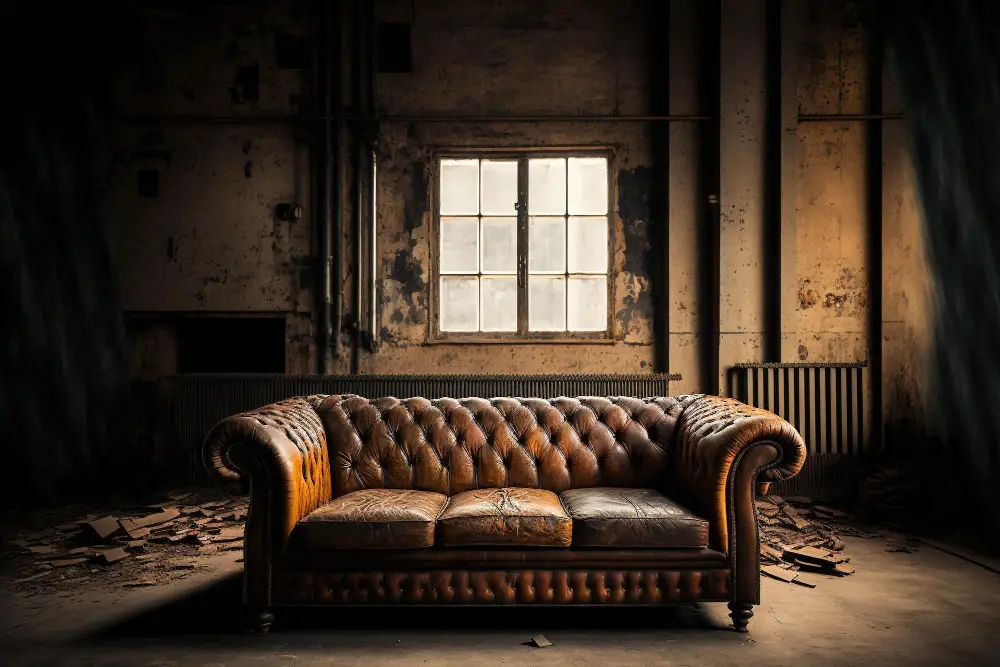
High-quality leather can last for decades, while low-quality leather may start to show signs of wear and tear within a few years.
Full-grain leather is considered the highest quality because it’s made from the top layer of animal hide, which has natural markings and texture. It’s also more durable than other types because it hasn’t been sanded or buffed down to remove imperfections.
Top-grain leather is another high-quality option that’s slightly less expensive than full-grain. It comes from the second layer beneath full grain but still retains some natural texture.
Split-leather, bonded-leather, faux-leather are all lower-grade options with varying degrees of durability. Genuine Leather refers to any type made from real animal hides but doesn’t necessarily indicate high quality.
As your couch ages over time due to usage patterns or environmental factors like sunlight exposure or humidity levels in your home; you’ll notice changes such as fading coloration on certain areas where there was frequent contact with skin oils/sweat (especially if not cleaned regularly), cracking along seams where stitching has weakened due to age-related stressors like weight distribution imbalance caused by sitting habits etcetera.
Frame Quality

It’s essential to choose a sturdy and durable frame that can withstand daily wear and tear. A high-quality hardwood, such as oak or maple, is an excellent choice for frames because it’s strong enough to support the weight of people sitting on it.
When shopping for a leather sofa, make sure you check the quality of its frame by inspecting its joints. The best frames are constructed using mortise-and-tenon joinery techniques which involve interlocking pieces together without screws or nails.
A well-built sofa should have corner blocks at each corner joint for added stability and strength. These blocks help prevent wobbling when someone sits down heavily on one side or another.
Cushion Foam Quality

High-density foam cushions are more durable and provide better support than low-density ones. Over time, low-quality cushion foam can lose its shape and resilience, leading to sagging and discomfort.
When shopping for a leather couch, it’s essential to check the density of the cushion foam used in it. A good rule of thumb is to look for cushions with at least 1.8 pounds per cubic foot (PCF) density or higher.
Some manufacturers use different types of foams such as memory or latex foams which offer superior comfort but may come at an extra cost.
By investing in high-quality cushioning materials upfront you will ensure your sofa remains comfortable over time while also extending its lifespan significantly. .
Cushion and Frame Considerations

The quality of the foam used in cushions can affect how quickly they lose their shape and support. High-density foam is more durable than low-density foam, so be sure to check what type of cushioning is used before making a purchase.
In addition to cushion quality, you should also consider the frame construction when selecting a leather sofa. A sturdy hardwood frame will provide better support for your cushions over time compared to cheaper materials like particleboard or plywood.
It’s important not only to choose high-quality materials but also ensure that they are assembled correctly by skilled craftsmen who take pride in their workmanship. This attention-to-detail approach ensures that all components fit together perfectly and create an overall solid structure for your furniture piece.
Physical Structure of Leather Sofas
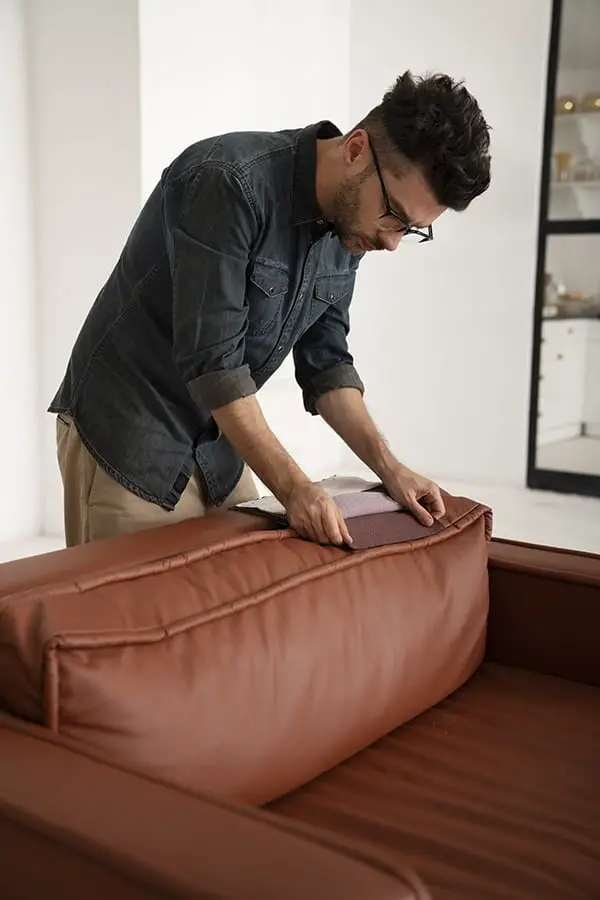
A well-built frame and sturdy cushioning can make all the difference in how long your couch lasts. When shopping for a leather sofa, look for one with a solid hardwood frame, such as oak or maple, which will provide excellent support and durability over time.
In addition to the frame quality, consider the type of cushion foam used in your leather couch. High-density foam cushions are more resilient than low-density ones and will hold their shape better over time.
You may also want to opt for cushions with down or feather fillings if you prefer softer seating.
When it comes to choosing between different types of leathers (full-grain vs top-grain), keep in mind that full-grain is generally considered more durable due to its natural texture and thickness compared to top grain’s sanded surface layer.
Environmental Factors Affecting Lifespan

Leather is a natural material that can be sensitive to changes in temperature and humidity levels. Exposure to direct sunlight, heat sources, or moisture can cause fading, cracking, and discoloration over time.
To prevent environmental damage from affecting your leather sofa’s longevity, it’s essential to keep it away from windows or doors where sunlight may enter directly. If you live in an area with high humidity levels or extreme temperatures (either hot or cold), consider investing in a dehumidifier or air conditioning unit for your living space.
Avoid placing your leather couch near heating vents as this could dry out the material and lead to cracks over time. It’s also important not to expose it directly under air conditioning units as this could cause shrinkage of the upholstery.
Effects of Sunlight On Leather Couches
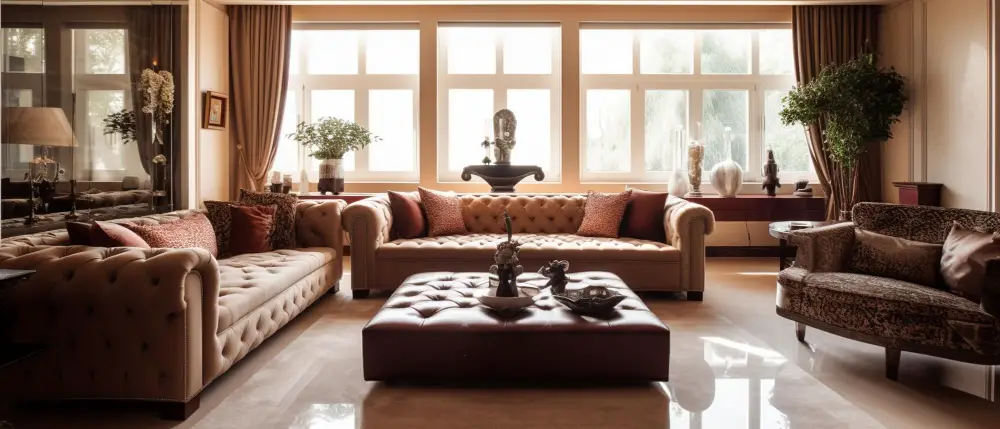
While natural light can enhance the beauty of your furniture, prolonged exposure to sunlight can cause significant damage over time. UV rays from the sun are known to fade colors and dry out leather, leading to cracks and discoloration.
To prevent this type of damage, it’s important to keep your leather couch away from direct sunlight or use window treatments like curtains or blinds during peak hours when the sun is strongest. If you’re unable to avoid placing your sofa in a sunny spot altogether, consider investing in protective covers for added protection.
Another way you can protect your leather sofa from harmful UV rays is by applying a specialized conditioner with SPF properties regularly. This will help maintain its suppleness while preventing fading caused by excessive exposure.
Impact of Usage Patterns

If you have a large family or frequently entertain guests, your sofa will experience more wear and tear than if it’s just used by one or two people. The type of activities that take place on the couch can also affect its longevity.
For example, jumping on the sofa or using it as a trampoline is not recommended and could cause damage to both the cushions and frame.
Another factor to consider is how often you clean your leather furniture. Regular cleaning helps remove dirt particles that may scratch against the surface of your couch over time leading to cracks in leather material.
To maximize usage patterns for longer-lasting sofas:
- Avoid sitting in one spot all day long
- Rotate cushions regularly
- Clean spills immediately they occur
- By following these simple tips, you’ll be able to enjoy many years with your beautiful leather sofa without worrying about premature aging due to excessive usage patterns
Pets and Leather Couches

If you have pets, it’s important to consider their impact on the lifespan of your furniture before making a purchase. Dogs and cats may scratch or chew at leather surfaces, leaving unsightly marks that can’t always be repaired easily.
Pet hair and dander can accumulate in the crevices of your sofa over time if not cleaned regularly.
To minimize damage from pets while still enjoying the comfort and style that comes with owning a leather couch, there are several things you can do:
- Train Your Pets: Teach them not to jump onto or scratch at furniture.
- Use Protective Covers: Consider using protective covers for areas where pets like to sit.
- Clean Regularly: Vacuuming up pet hair frequently will help prevent buildup in crevices.
- Apply Leather Conditioner Regularly: This helps keep the surface supple so scratches don’t become permanent.
Care and Maintenance
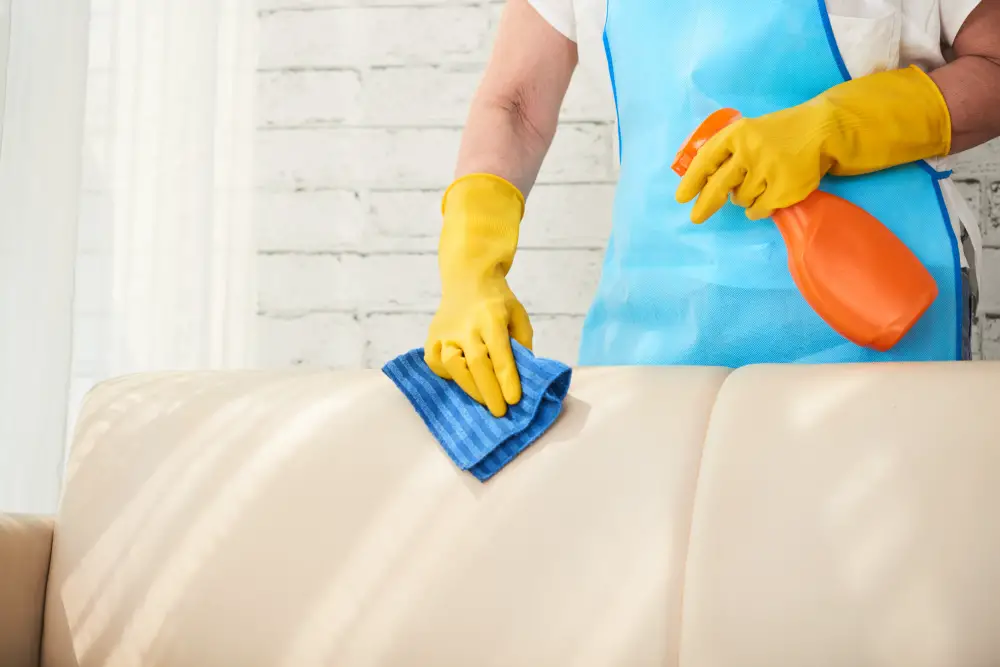
Here are some tips on how to take care of your leather sofa:
1. Preventing Leather Fading and Cracks: Avoid placing your leather couch in direct sunlight or near heat sources such as radiators or fireplaces.
This can cause the leather to fade or crack over time.
2. Applying Leather Conditioner Regularly: Use a high-quality conditioner specifically designed for leather furniture at least twice a year (or more often if you live in a dry climate).
Conditioning helps keep the material supple, preventing it from drying out and cracking.
3. Avoid Spilling Food and Drink: Accidents happen but try not to spill food or drink on your sofa as this can leave stains that may be difficult (if not impossible) to remove.
Preventing Leather Fading and Cracks
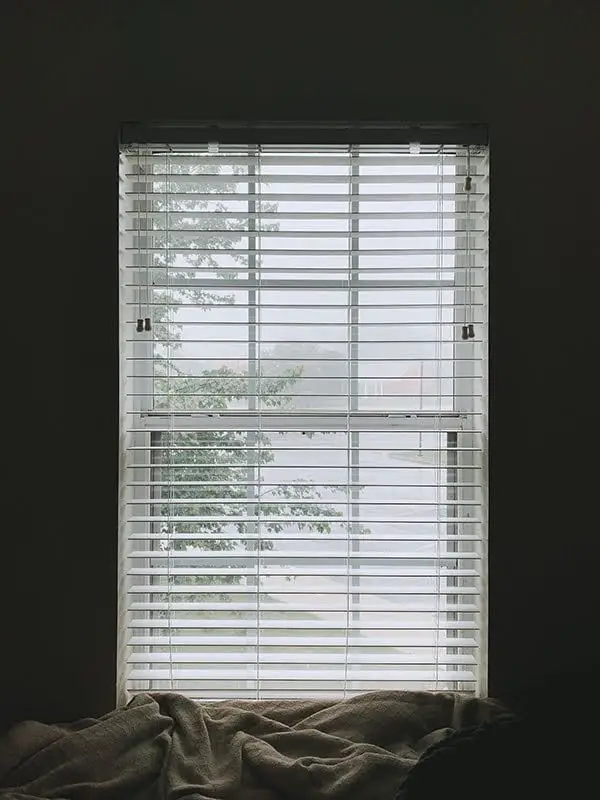
One of the most common issues with leather furniture is fading and cracking. These problems can be caused by a variety of factors such as sunlight exposure or lack of proper care.
To prevent fading, it’s important to keep your leather sofa away from direct sunlight or heat sources that can cause discoloration over time. If possible, position your couch in a shaded area where it won’t be exposed to too much light.
Another way to prevent fading is by using curtains or blinds on windows during peak daylight hours when the sun’s rays are strongest. This will help reduce the amount of UV radiation that reaches your furniture.
Cracking occurs when leather dries out due to lack of moisture content in its fibers; this happens more often than not if you live in dry climates with low humidity levels. To avoid cracks forming on your sofa surface over time, apply a high-quality conditioner regularly (at least twice per year) which helps maintain moisture balance within its fibers while also providing protection against environmental elements like dust particles settling onto surfaces causing abrasion damages leading up towards cracks formation eventually.
Applying Leather Conditioner Regularly
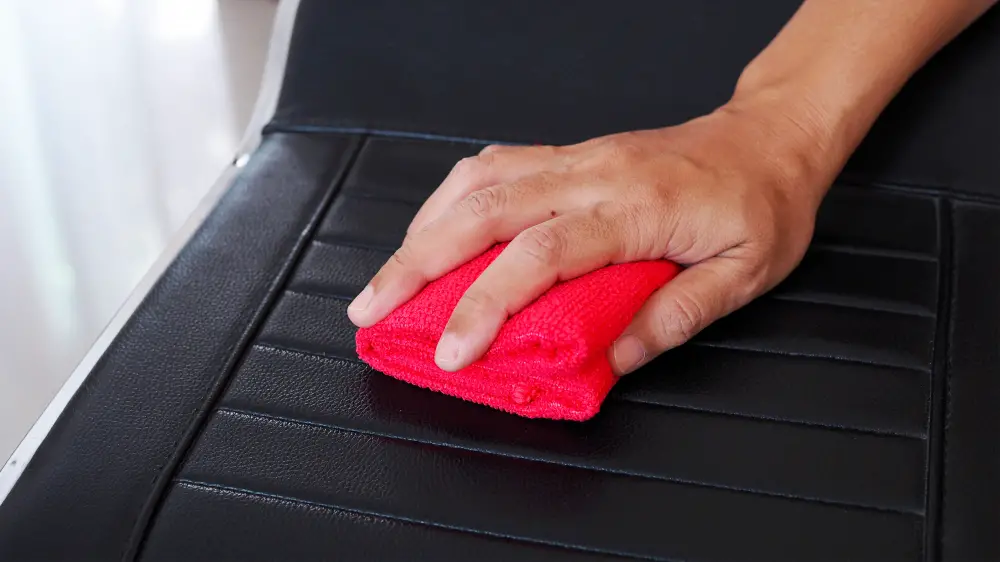
It helps to keep the material supple and moisturized, preventing it from drying out and cracking over time. Applying leather conditioner regularly can also help to protect against stains and spills, making cleaning easier.
To apply leather conditioner, start by wiping down your couch with a clean cloth or vacuuming any debris that may have accumulated on its surface. Then use a soft cloth or sponge to apply the conditioner evenly across all areas of the sofa’s surface.
It’s important not to over-apply as this can lead to discoloration or damage. Follow manufacturer instructions for application frequency based on usage patterns and environmental factors such as humidity levels.
Avoid Spilling Food and Drink

One of the most common causes of damage to leather furniture is spills from food and drink. While accidents happen, there are steps you can take to minimize the risk.
Firstly, avoid eating or drinking on your leather sofa altogether if possible. If that’s not an option for you, use coasters and placemats as a barrier between your food or drink and the surface of your couch.
If a spill does occur (and let’s face it – it probably will at some point), act quickly! Use a clean cloth or paper towel to blot up any excess liquid immediately after the spill happens. Avoid rubbing as this can push liquid deeper into the pores of your leather upholstery.
Next, use warm water with mild soap (such as dish soap) on another clean cloth to gently wipe away any remaining residue from spills like coffee stains or soda marks before they set in permanently.
Signs of Aging in Leather Furniture
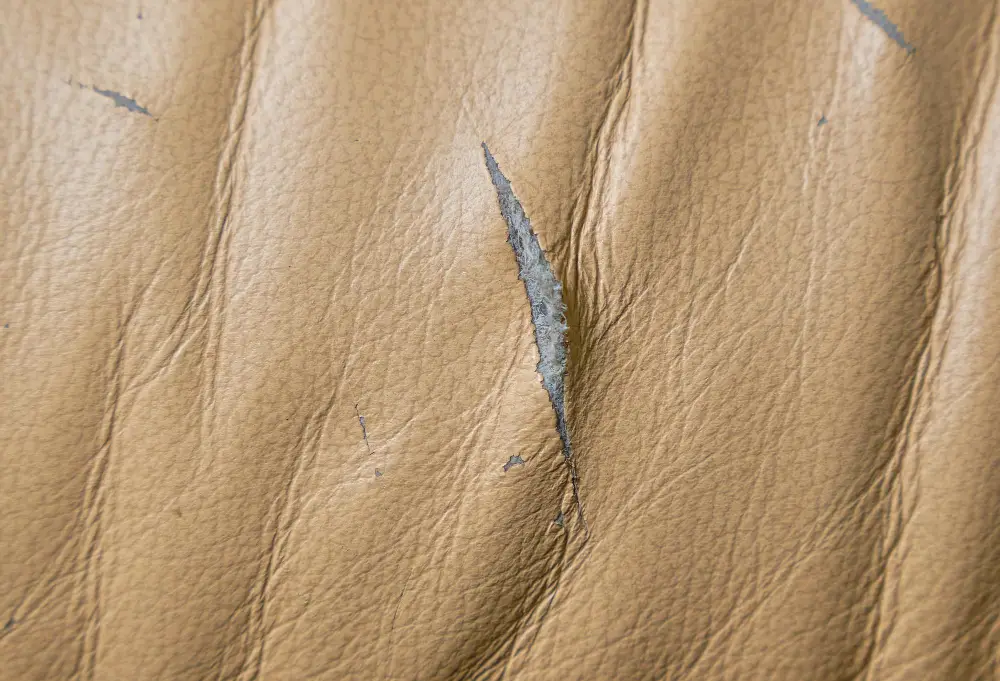
The good news is that you can identify these signs early on and take steps to prevent further damage. One of the most common indicators of an aged leather sofa is cracking or peeling in the surface layer.
This happens when natural oils evaporate from the leather over time, causing it to dry out and become brittle.
Another sign of aging in a leather couch is fading or discoloration due to exposure to sunlight or heat sources like radiators and fireplaces. Leather also tends to lose its elasticity as it ages, which can lead to sagging cushions and a less supportive seating experience.
If you notice any cracks or tears in your sofa’s upholstery, it’s important not only for aesthetic reasons but also because they could worsen if left unaddressed – leading ultimately towards irreparable damage.
Repairing and Restoring Leather Couches
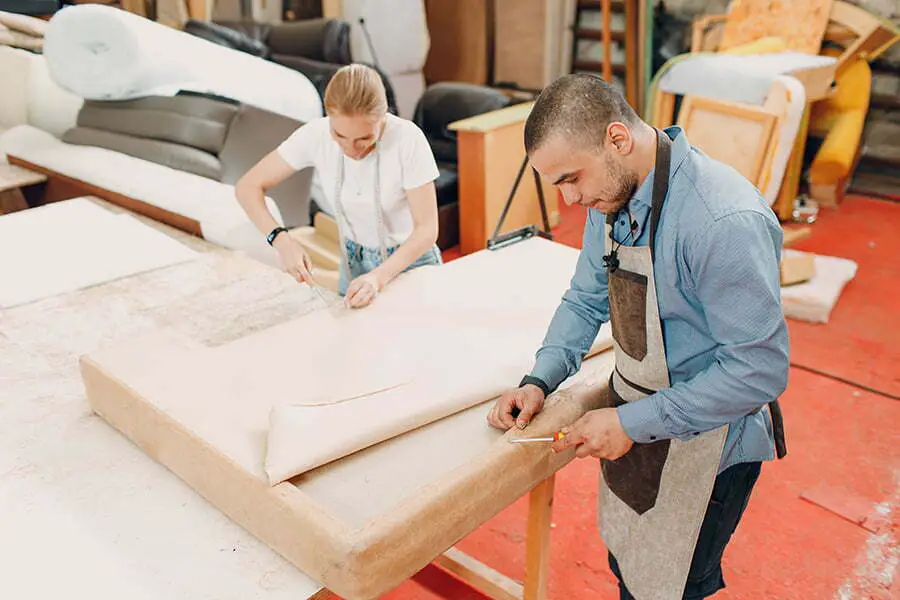
Even with proper care and maintenance, leather furniture can still show signs of aging over time. Scratches, cracks or fading may occur due to regular use or environmental factors such as sunlight exposure.
Fortunately, repairing and restoring your leather couch is an option that can extend its lifespan significantly. There are several ways you can restore the beauty of your aged sofa without having to replace it entirely.
One way is through quality leather repair services that specialize in fixing scratches or tears on the surface of the material. These professionals have experience working with different types of leathers and know how best to treat each one for optimal results.
Another option is hiring professional reupholstery services if you need more extensive repairs done on your sofa frame or cushions beyond just fixing minor damages on its surface area.
Quality Leather Repair
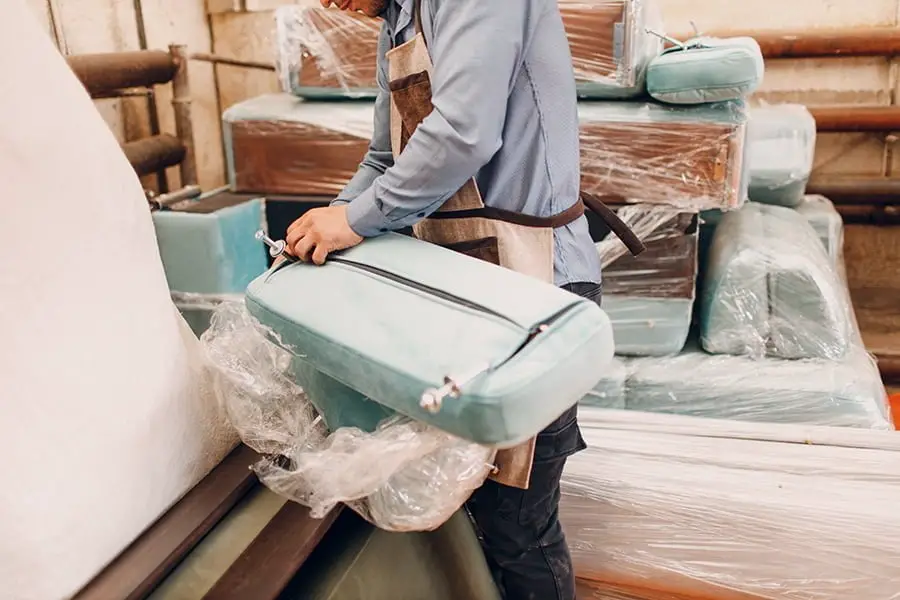
Don’t worry, there are ways to repair and restore your beloved furniture piece back to its former glory.
One option is quality leather repair. This involves using a specialized kit or hiring a professional who has the expertise in repairing scratches, cracks, tears or other damages on your leather sofa.
When choosing a DIY kit for repairing minor damages such as scratches or small tears on the surface of your couch’s upholstery; make sure it matches the color of your sofa’s original finish so that you get an even look after repairs are done.
For more significant damage like deep cuts or large rips in the fabric; it may be best to hire professionals who have experience working with different types of leathers and can provide high-quality restoration services that will last longer than DIY fixes.
Hiring Professional Leather Reupholstery Services
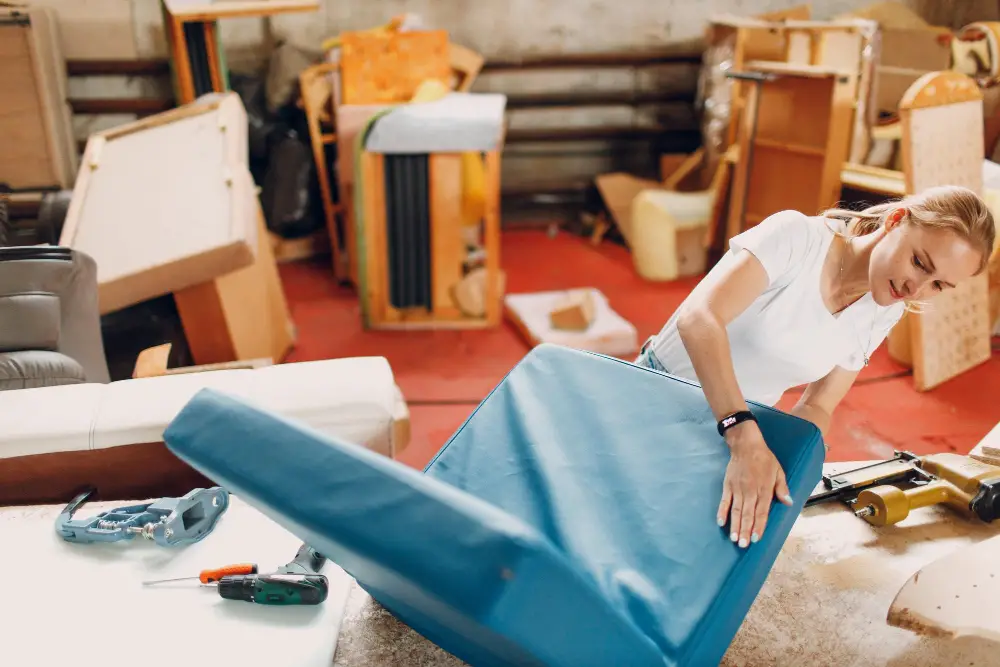
While this can be a great option for extending the lifespan of your furniture, it’s important to choose the right company for the job.
When looking for a professional leather reupholstering service, make sure they have experience working with all types of leather and are knowledgeable about different repair techniques. Ask if they offer any warranties or guarantees on their work and check reviews from previous customers.
It’s also essential that you get an accurate estimate before agreeing to any work being done. Reupholstering can be expensive depending on how much damage needs repairing and what type of materials will need replacing.
Leather Furniture Warranties

Most reputable manufacturers offer some form of warranty, which can range from one year to a lifetime guarantee. A warranty typically covers manufacturing defects and workmanship issues that may arise during the specified period.
It’s essential to read the fine print of any warranty before making your purchase. Some warranties only cover specific parts or components, while others may require you to perform regular maintenance tasks such as conditioning the leather regularly.
Keep in mind that even with a good quality leather sofa and proper care, accidents can happen that aren’t covered by most warranties – like scratches from pets or accidental spills on your couch.
When shopping for a new leather sofa, be sure to ask about available warranties and what they cover so you can make an informed decision based on your needs and budget.
Upgrading Your Leather Couch
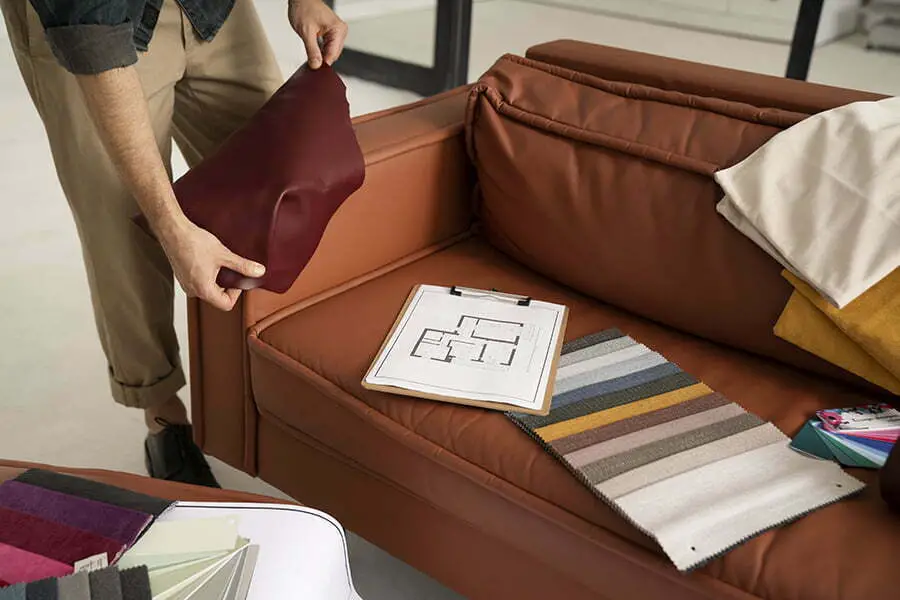
If you’ve had your leather sofa for several years, chances are it’s showing some signs of wear and tear. But before you decide to replace it entirely, consider upgrading instead.
One option is to reupholster the couch with high-quality leather or fabric that complements your decor style. This can be done by hiring professional upholstery services or doing it yourself if you have experience in furniture restoration.
Another option is to add accessories such as throw pillows, blankets, or even a stylish rug underneath the sofa. These small touches can make a big difference in transforming the overall look of your living room while also protecting the surface of your couch from scratches and spills.
Consider investing in additional features like built-in recliners or cup holders for added comfort and convenience. Upgrading these elements not only enhances functionality but also adds value to an aging piece of furniture.
Disposing of Aged Leather Couches
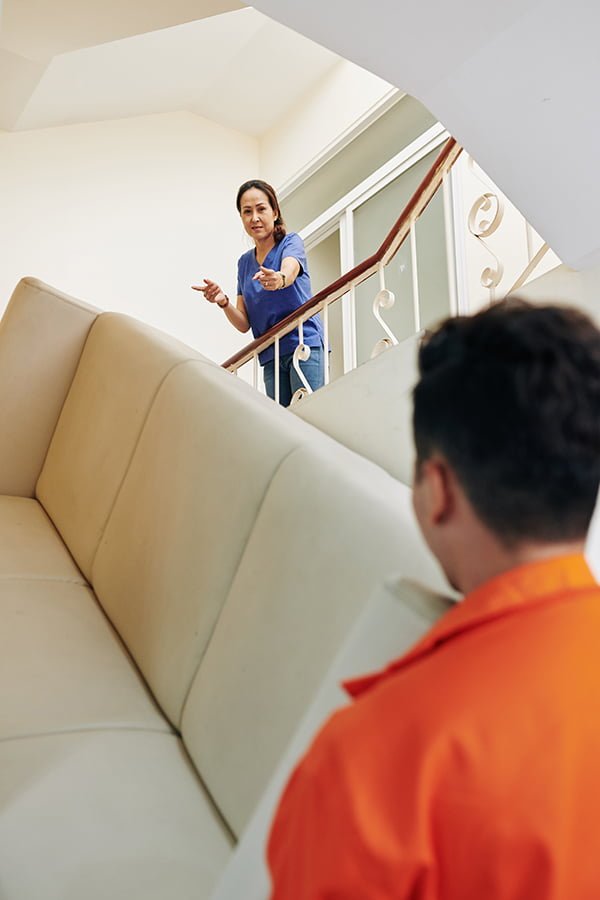
When this happens, it’s important to dispose of it properly and responsibly. One option is to donate your old leather sofa to a local charity or non-profit organization that accepts furniture donations.
This way, you can give back to the community while also getting rid of an unwanted item.
Another option is recycling your aged leather couch by contacting local recycling centers or waste management companies in your area that offer bulk pickup services for large items like sofas. They may be able to recycle some parts such as metal frames and foam cushions.
If neither donation nor recycling options are available in your area, then consider hiring professional junk removal services who will take care of disposing off the aged sofa safely without harming the environment.
Choosing the Right Leather Sofa for Your Living Room
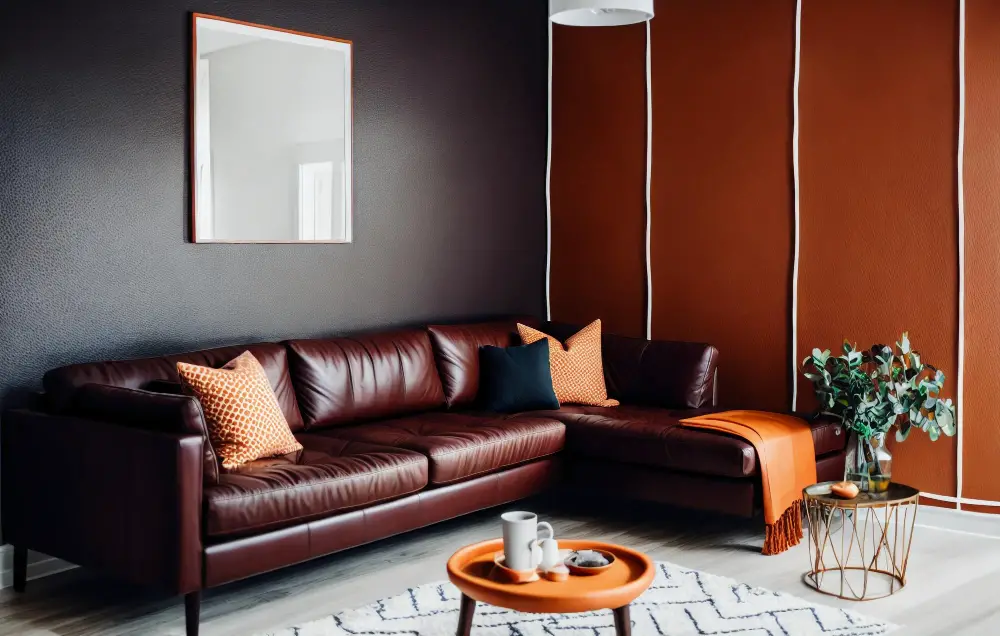
First and foremost, think about the size of your space. A large sectional may not be practical in a small apartment or cozy bungalow.
On the other hand, if you have ample square footage to work with, don’t be afraid to go big and bold.
Next up is color selection – do you want something neutral that will blend seamlessly into any decor scheme? Or would you prefer a statement piece in rich burgundy or navy blue? Keep in mind that darker colors tend to show wear less than lighter shades.
Take note of any special features that might make one couch stand out from another – perhaps an adjustable headrest for ultimate comfort during movie nights or built-in storage compartments for extra blankets and pillows.
Life Expectancy of Leather Sofas

On average, a well-maintained leather couch can last anywhere from 10 to 15 years or more. However, some high-quality leather sofas can last up to 25 years with proper care and maintenance.
It’s important to note that the lifespan of your leather sofa also depends on how often you use it and how many people use it regularly. If you have pets or children who frequently sit or play on your couches, they may wear out faster than if only adults are using them.
Exposure to sunlight can cause fading and cracking in the material over time. To prevent this from happening too quickly make sure not place your furniture near windows where direct sunlight hits them for extended periods.
Overall though investing in a good quality piece will ensure that you get maximum value for money as well as longevity out of your purchase!
FAQ
Do leather couches age well?
Yes, leather couches age well with proper maintenance and care, as they can last for decades and become more comfortable over time.
Does leather sofa last longer than fabric?
Yes, leather sofas typically last longer than fabric sofas due to their durability and ease of maintenance.
How long does a high quality sofa last?
A high-quality sofa typically lasts between 7 to 15 years, with factors such as solid wood frames, reinforced joinery, and genuine leather upholstery contributing to a longer lifespan.
What factors contribute to the longevity of a leather couch?
Longevity of a leather couch depends on factors such as quality of materials, craftsmanship, proper maintenance, and usage patterns.
Are there any specific maintenance tips to prolong the lifespan of a leather sofa?
To prolong the lifespan of a leather sofa, regularly dust, vacuum, and clean with a damp cloth while avoiding direct sunlight and maintaining a consistent temperature and humidity.
How does the type of leather used affect the durability of a leather couch?
The type of leather used affects the durability of a leather couch as higher-quality and thicker leathers like full-grain and top-grain ensure longer-lasting and more robust furniture, while lower-quality or thinner leathers are less durable.
